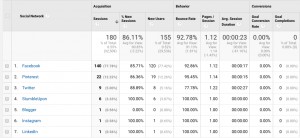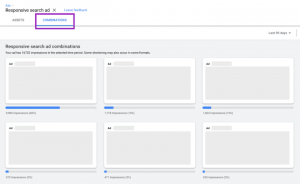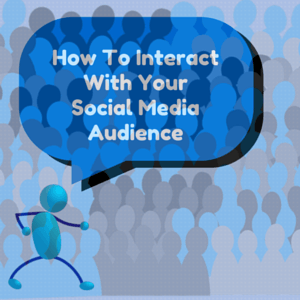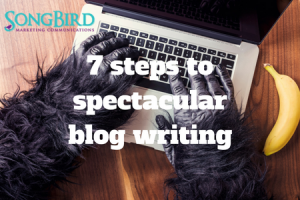— July 28, 2018
Email is one of the oldest forms of modern communication. But it’s still so effective that companies continue to put a lot of effort into making this sales technique stand out in consumers’ inboxes. The mistake that many of them make, however, is not focusing on solving the right problems within their messages.
Cold emails that go on and on about how great a product is are a dime a dozen. They fail because they solve the wrong objection. Like a car salesman who glosses over your concerns as he tries to close a sale, semi-personalized lead generation emails are rarely relevant. In one Periscope by McKinsey study, consumers say only about 40 percent of the emails they received actually felt somewhat personal.
Adding a little credibility to your message can be effective, but if it’s all you do, then you’re not even answering the right question. Your audience members want to know why they need your product. The answer is never “Because we’re a good company with a good product.” The real answer lies in how contextualized and relevant you can make the product’s benefits to each prospect’s current circumstances.
Personalized Versus One-to-One Cold Emails
The idea behind personalizing emails to your consumers is to speak as though you are talking to each individual one-on-one. On the surface, the premise is simple: Make every single email feel like it was sent from a human to a human. You don’t have to be very email-savvy to spot a pseudo-personalized email, and when consumers realize they’re on a list, the tactic backfires.
Think about how you communicate with your colleagues and describe your services in person to new employees. Speak casually and conversationally, using vernacular when appropriate. Consider what needs to be said and who you’re saying it to. If your email sounds like a pitch when you say it out loud, then it reads like one, too.
So how do you make thousands of emails sound like each one was written personally? It takes a heavy focus on defining and segmenting your buyer personas. Writing out every cold email you send isn’t viable, but highly detailed personas will help you engage every prospect as personally as if you had.
Creating One-to-One Cold Emails for Your Entire Audience
It seems obvious to say that CEOs of companies making $ 1 million to $ 10 million in revenue face different challenges than the heads of companies making $ 1 billion to $ 2 billion. When you look closer, though, you might find that the messages you send to both targets are identical. That theoretical knowledge didn’t make its way into your practical strategies.
One-to-one messaging forces you to segment your audience in ways you might not have thought of. Instead of just title, separate prospects by revenue and employee count, as well. This creates new groups and subsets of prospects that all face similar challenges you can address personally and in detail.
It also creates a new set of challenges for you and your marketing team. To tackle them effectively, be sure to follow these steps throughout the process of writing a cold sales email:
1. Experiment first.
Experimenting and testing are not the same. Before testing anything, experiment with crazy ideas with no bias or regard for your desired outcome. Sure, finding the “perfect” email strategy should be your ultimate goal, but some of the best tactics come from harebrained ideas that never would’ve gained traction without the freedom to experiment.
2. Test your hypotheses.
Your experiments will give you a few raw hypotheses to test. If you already have an email strategy that works well, A/B test it against each hypothesis you think has merit. Compartmentalize the tests by adding 10 percent to whatever your meeting conversion rate already is. That way, you can track any new clients you get without compromising your revenue goals.
3. Build out personas.
The better you understand the different buyer personas you’re trying to reach, the more successfully you can test your new ideas. Identify real people, visit their LinkedIn profiles, and message a colleague that fits the description. Then, ask your colleague all of the questions you have for your persona and use his answers to tweak your message, so it doesn’t come off as generic or unfocused.
4. Leverage variable tags.
After you’ve built your personas, utilize the variable tags in your email marketing automation tools. Along with things like “first name” and “company,” you’ll also find a multitude of other helpful tags, or you can customize tags as necessary. Put your customer data to work: Tag downloaded resources, frequency of communication with your company, and other differentiators so you can create a sequence that keeps each persona engaged.
5. Embrace one-to-one communication.
Emails are only one small factor in your lead generation strategy; the one-to-one concept of communicating should permeate all of your customer engagement. Consider how you can make each prospect feel like she is your only priority by translating each message across different channels. Make sure the message in a lead’s inbox aligns with the one she saw on your website, her LinkedIn profile and every other social media channel.
Like messages on different platforms, your emails to different personas shouldn’t just regurgitate the same thing over and over. Sure, they should serve the overall, one-to-one conversation you’re trying to have with your leads, but they must do so in a way that makes the communication feel personal. It’s the only way to make sure your emails don’t feel like just another dry attempt to make a sale.
Need some help making your emails shine? My company, Sapper Consulting, can help you learn how to increase sales through enterprise content. Request a demo today.
Digital & Social Articles on Business 2 Community
(18)






